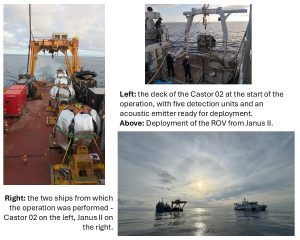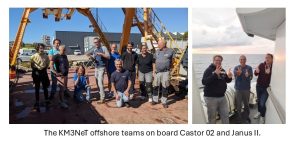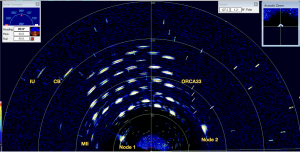15 October 2025 – A very successful sea operation took place last week, leading to a significant extension of the ORCA submarine telescope. In about three days of operation in a very flat sea, five new detection units were installed in the deep sea and connected to the detector. In addition a set of four detection units already deployed in a previous campaign was connected to the second node of the submarine network, which was recently installed. Finally, a new tripod bearing an acoustic emitter to be used for positioning purposes was installed.
At the end of the operation, the apparatus comprises 33 detection units.
Start of deployment of one detection unit.
As usual, the operation was performed with two ships: the Castor 02 of Foselev, for deployment of the detection units, and the Janus II of SAAS (formerly Comex), equipped with the Apache deep-sea remotely operated vehicle (ROV), for submarine operations.
Everything worked very smoothly – many thanks to the crews offshore as well as to the team who performed the functional tests of the new detection units from the shore station and anyone else involved in making this great step forward possible!


Welcome, ORCA33!


